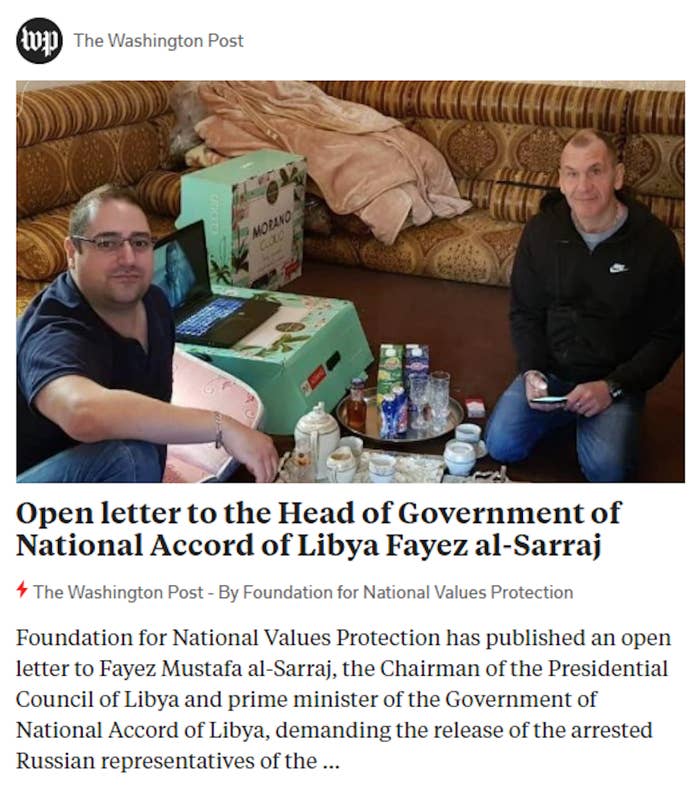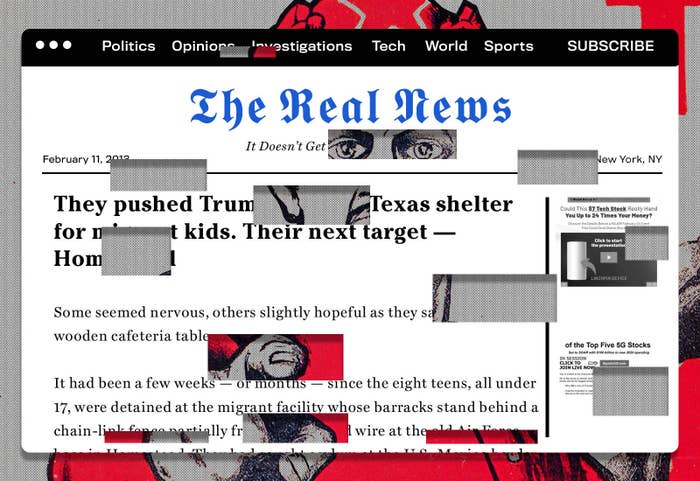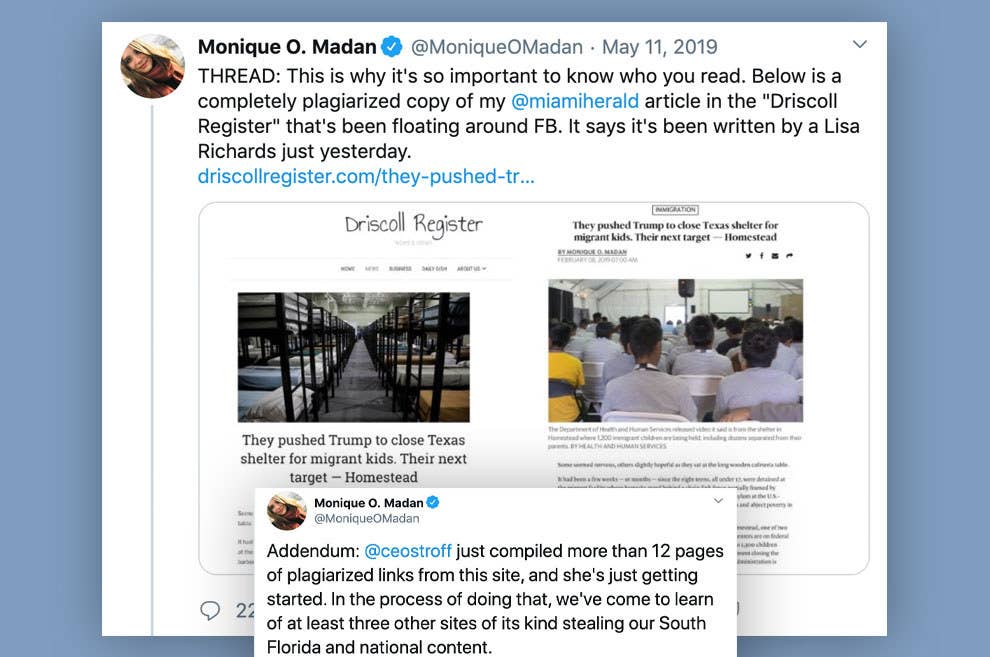Hundreds rally in Metro Vancouver and Victoria in solidarity with Wet'suwet'en
Hours after police arrested dozens of protesters for blockading port entrances in Vancouver and Delta, B.C., marches were held in Vancouver and Victoria in ...
1 arrested as residents tear down anti-pipeline blockade on Vancouver Island
At least one person was arrested as pipeline opponents and angry citizens met in a chaotic scene on a Vancouver Island highway, Monday. Demonstrators ...
Activists Block Train Lines In Ontario, Quebec Over B.C. Pipeline Protest
Demonstrators south of Montreal blocked a commuter train line into the city on Monday in solidarity with protesters opposed to a pipeline project in northwestern ...
Police arrest 34 anti-pipeline protesters at Vancouver port as they enforce court injunction
Police arrested 34 demonstrators at the Port of Vancouver at Hastings and Clark streets early Monday as they enforced an injunction against protesters blocking ...
It’s possible that I shall make an ass of myself. But in that case one can always get out of it with a little dialectic. I have, of course, so worded my proposition as to be right either way (K.Marx, Letter to F.Engels on the Indian Mutiny)
Tuesday, February 11, 2020
Lupita Nyong'o Defended Horror Films After "Us" Was Snubbed By The Oscars
The star of Us also told BuzzFeed News there's a lot of work to do before actors of color are treated equally at awards shows.
The star of Us also told BuzzFeed News there's a lot of work to do before actors of color are treated equally at awards shows.
David MackBuzzFeed News Reporter
Posted on February 10, 2020, at 12:11 p.m. ET

Universal Pictures
It's been six years since Lupita Nyong'o took home an Oscar for her performance in 12 Years A Slave, but many had tipped her to be among the nominees at Sunday night's Academy Awards.
But Nyong'o's versatile turn as a mother and her terrifying doppelgänger in the Jordan Peele film Us — which was so good that she even scared her costars on set — didn't make the final cut for the Best Actress category.
In an interview that aired Monday on BuzzFeed News morning show AM to DM, the actor said she wasn't aware of the perception that Academy voters are biased against horror films.
"I definitely heard a lot of that as I was promoting the film," she said. "People would say there's this bias against horror films — one that I was not aware of."

AM2DM by BuzzFeed News@AM2DM
Full Interview: @LupitaNyongo talks her upcoming "Americanah" adaptation, #BlackPanther 2, and more https://t.co/pV7Gg3Mpzs06:50 PM - 10 Feb 2020
Reply Retweet Favorite
Peele's earlier film Get Out is among just six horror films that have ever been nominated for Best Picture at the Oscars (the others being The Exorcist, Jaws, The Sixth Sense, Black Swan, and The Silence of the Lambs, which is the only horror movie to win the top prize). Some actors have won for their work in horror films, such as Kathy Bates' win in Misery in 1990 or Natalie Portman in 2011's Black Swan, but the horror bias remains real.
Nyong'o's Us performance was honored as the year's best by the New York Film Critics Circle Awards, sparking major Oscars buzz, but she ultimately did not secure a nomination.
When asked by BuzzFeed News what she would say to people who believe she was snubbed, she responded only, "Thank you."
However, she urged Oscars voters not to turn their noses up at horror films.
"At the end of the day, I think the value of award shows is to show innovation in cinema," said Nyong'o. "So having a discrimination against a genre feels so silly really."
"I feel like there should be room for any genre to be eligible for that kind of recognition," she said.
As for this year's overwhelmingly white slate of nominees in the acting categories, Nyong'o offered a blunt call for her fellow Academy members to do better.
"I think it's just proof positive that there's a lot of work to do for us to get to a place of equity," she said. "Really, that's it."
LUPITA NYONG'O
Lupita Nyong'o Says She Knew She Had To Work With Jordan Peele After Seeing "Get Out" 5 TimesJulia Reinstein · March 9, 2019
Lupita Nyong'o's Acting Terrified Her "Us" Costar Shahadi Wright JosephMichael Blackmon · March 21, 2019
David Mack is a deputy director of breaking news for BuzzFeed News and is based in New York.
Contact David Mack at david.mack@buzzfeed.com.
Posted on February 10, 2020, at 12:11 p.m. ET

Universal Pictures
It's been six years since Lupita Nyong'o took home an Oscar for her performance in 12 Years A Slave, but many had tipped her to be among the nominees at Sunday night's Academy Awards.
But Nyong'o's versatile turn as a mother and her terrifying doppelgänger in the Jordan Peele film Us — which was so good that she even scared her costars on set — didn't make the final cut for the Best Actress category.
In an interview that aired Monday on BuzzFeed News morning show AM to DM, the actor said she wasn't aware of the perception that Academy voters are biased against horror films.
"I definitely heard a lot of that as I was promoting the film," she said. "People would say there's this bias against horror films — one that I was not aware of."

AM2DM by BuzzFeed News@AM2DM
Full Interview: @LupitaNyongo talks her upcoming "Americanah" adaptation, #BlackPanther 2, and more https://t.co/pV7Gg3Mpzs06:50 PM - 10 Feb 2020
Reply Retweet Favorite
Peele's earlier film Get Out is among just six horror films that have ever been nominated for Best Picture at the Oscars (the others being The Exorcist, Jaws, The Sixth Sense, Black Swan, and The Silence of the Lambs, which is the only horror movie to win the top prize). Some actors have won for their work in horror films, such as Kathy Bates' win in Misery in 1990 or Natalie Portman in 2011's Black Swan, but the horror bias remains real.
Nyong'o's Us performance was honored as the year's best by the New York Film Critics Circle Awards, sparking major Oscars buzz, but she ultimately did not secure a nomination.
When asked by BuzzFeed News what she would say to people who believe she was snubbed, she responded only, "Thank you."
However, she urged Oscars voters not to turn their noses up at horror films.
"At the end of the day, I think the value of award shows is to show innovation in cinema," said Nyong'o. "So having a discrimination against a genre feels so silly really."
"I feel like there should be room for any genre to be eligible for that kind of recognition," she said.
As for this year's overwhelmingly white slate of nominees in the acting categories, Nyong'o offered a blunt call for her fellow Academy members to do better.
"I think it's just proof positive that there's a lot of work to do for us to get to a place of equity," she said. "Really, that's it."
LUPITA NYONG'O
Lupita Nyong'o Says She Knew She Had To Work With Jordan Peele After Seeing "Get Out" 5 TimesJulia Reinstein · March 9, 2019
Lupita Nyong'o's Acting Terrified Her "Us" Costar Shahadi Wright JosephMichael Blackmon · March 21, 2019
David Mack is a deputy director of breaking news for BuzzFeed News and is based in New York.
Contact David Mack at david.mack@buzzfeed.com.
Twitter Got A Big Tax Break To Stay In San Francisco. Now Jack Dorsey Says Its Future Is No Longer In The City.
As Twitter's home city nears a vote limiting new office space construction, the company may be forced to locate its workforce elsewhere.
Alex KantrowitzBuzzFeed News Reporter
Posted on February 7, 2020

David Becker / Getty Images Twitter CEO Jack Dorsey
Nine years ago, San Francisco gave Twitter a major, controversial tax break to stay in the city, locating the social media company’s headquarters in the bleak mid-Market neighborhood. But today, after taking the money, Twitter is putting San Francisco on mute as it plans to expand outside of the city.
“Our concentration in San Francisco is not serving us any longer and we will strive to be a far more distributed workforce,” Twitter CEO Jack Dorsey said on an earnings call Thursday. “We have to build a company that’s not entirely dependent on San Francisco.”
“Sounds like something Jack would say,” San Francisco Supervisor Aaron Peskin, a frequent critic of the tech industry and one of the leaders of the board’s progressive faction, told BuzzFeed News. “Apparently, the only thing serving Twitter anymore is Donald Trump.”
When they introduced the Twitter tax break, politicians hoped it would revitalize the neighborhood and attract jobs to a city whose unemployment rate was several multiples above where it is today, nearing 10% in 2010.
As the city’s politics lurch leftward — unlike when the tax passed, Peskin’s faction now controls of the Board of Supervisors and the city will vote on a proposition limiting new office space construction in March — Twitter, which took tens of millions in tax incentives throughout the decade, is planning to spread its workforce across the globe. In recent years, the centrist policies championed by former mayors like Ed Lee have given way to an anti-corporate wave, including the election of a democratic socialist to the board in 2019, mirroring a change in the national Democratic party.
After the tax break expired as planned last May, there was little appetite in San Francisco to renew it. San Francisco voters also approved a ballot measure in 2018 that required companies with more than $50 million in annual revenue to pay an additional tax to help people who are homeless. Dorsey opposed the measure, saying it treated companies like Dorsey’s company Square unfairly compared to ones like Salesforce, whose CEO Marc Benioff backed it, and Square later sued the city over its tax bill.
Critics of Twitter’s tax break saw Dorsey’s comments on Thursday as a validation of their skepticism. “I'm not surprised to hear that they're not really prioritizing their presence in San Francisco,” David Campos, a former San Francisco supervisor who voted against the tax break when he was on the board in 2011, told BuzzFeed News. “I'm not surprised that they essentially benefited from a very generous tax policy by city government, only to turn around and say San Francisco is not a priority for us. Unfortunately, it's what many of us suspected.”
Ted Egan, San Francisco’s chief economist, said Dorsey’s statement was somewhat concerning. “It reinforces the fact that the city's had a challenge in keeping large companies in the city as they grow,” he told BuzzFeed News. To Egan, it was not a complete surprise, given the high price of doing business in the Bay Area, which faces skyrocketing housing costs. “It's not unexpected that a major tech company would choose to have a distributed workforce or grow globally, particularly when the cost of living differences between San Francisco and many other places are continuing to widen.”
Despite Dorsey’s announcement, it’s unclear how fast Twitter’s employee base will shift from the city, and finding the type of workers it’s looking for in other places may be its biggest challenge: Once an economic cluster is established, it’s hard to move. “This issue has been brought up many times in the past. But it's a very niche labor market,” Enrico Moretti, a University of California, Berkeley, economics professor and the author of The New Geography of Jobs, told BuzzFeed News. “Ultimately, the type of occupations that lend themselves to remote work is not huge.”
Twitter doesn’t predict a mass exodus anytime soon. “San Francisco will be where the majority of our employees will be based for the foreseeable future,” a Twitter spokesperson told BuzzFeed News following Dorsey’s comments. “There's incredible talent around the world and we have to be able to work in a way that supports them as employees regardless of where they live, especially when they want to build careers in their own communities.”
Not all observers were opposed to the move. “There's always blowback,” said Anna Auerbach, cofounder and co-CEO of Werk, an analytics company that enables flexible work. The benefits, she said, will outweigh the costs. “It's going to help Twitter attract a really incredible talent pool, a really diverse talent pool, and my hunch is, they're going to see some really fundamental changes when it comes to productivity improvements and culture and retention.”
CORRECTION
February 7, 2020, at 11:50 a.m.
This story has been amended to reflect that Square, not Twitter, is treated differently than Salesforce under a new San Francisco tax.
These Pictures Capture The Glory That Was The Harlem Renaissance
Throughout the 1920s and into the '30s, the Harlem neighborhood of New York City was a mecca of black community, music, fashion, and art that can best be described as a cultural renaissance.
 Gabriel H. SanchezBuzzFeed News Photo Essay Editor
Gabriel H. SanchezBuzzFeed News Photo Essay Editor
At the start of the 20th century, the Harlem neighborhood of New York City was home to a largely black middle-class community that thrived following a period known as the Great Migration, when many black families left the oppressive South for new beginnings.
In the years that followed marked the era of the Harlem Renaissance, which saw a flourishing of art, music, dance, poetry, entrepreneurship, and fashion that set the foundation for black culture in America today. Artists who called Harlem their home, such as Augusta Savage and Aaron Douglas, developed a new visual lexicon for black culture, while writers and poets such as W.E.B. Du Bois and Zora Neale Hurston used language to help define the realities of the black American experience. At night, venues such as the Cotton Club and the Savoy Ballroom packed the dance floor with groundbreaking new musicians like Duke Ellington, Bessie Smith, and Cab Calloway.
These pictures capture the sights and scenes of Harlem during this quintessential time of American history.
 A police officer directs traffic in Harlem, 1925.
A police officer directs traffic in Harlem, 1925. A group of young girls play after school, 1925.
A group of young girls play after school, 1925. Harlem schoolboys, circa 1930.
Harlem schoolboys, circa 1930.
Underwood Archives / Getty Images
Lt. James Reese Europe and members of his 369th Infantry Regiment jazz band participate in a parade upon their return to the United States from Europe, 1919. The 369th was also known as the Harlem Hellfighters.
 A parade organized by the United Negro Improvement Association, 1920.
A parade organized by the United Negro Improvement Association, 1920. Marcus Garvey (second from right) sits in the back of a car in a parade through Harlem, circa 1920.
Marcus Garvey (second from right) sits in the back of a car in a parade through Harlem, circa 1920. The newsrooms of the Amsterdam News in Harlem, 1938.
The newsrooms of the Amsterdam News in Harlem, 1938. Louis Armstrong shakes hands with EJ Harris while receiving an award from the National Swing Club of America, alongside (from left) bandleader Joe Springer, pianist Duke Ellington, and WMCA radio's Lee Grant, circa 1935.
Louis Armstrong shakes hands with EJ Harris while receiving an award from the National Swing Club of America, alongside (from left) bandleader Joe Springer, pianist Duke Ellington, and WMCA radio's Lee Grant, circa 1935. A'Lelia Walker, daughter of entrepreneur Madam C.J. Walker, supervises a facial in one of her mother's beauty parlors in Harlem, 1930.
A'Lelia Walker, daughter of entrepreneur Madam C.J. Walker, supervises a facial in one of her mother's beauty parlors in Harlem, 1930. A man receives a manicure at a beauty parlor, circa 1930.
A man receives a manicure at a beauty parlor, circa 1930.



SEE MORE
Trans Starbucks Employees Say The Company Is Letting Them Down
Employees told BuzzFeed News they've encountered deadnaming, misgendering, outing, and trouble getting surgeries covered with their employee insurance.
Employees told BuzzFeed News they've encountered deadnaming, misgendering, outing, and trouble getting surgeries covered with their employee insurance.
Lauren Strapagiel is a reporter for BuzzFeed News and is based in Toronto, Canada.
Posted on February 6, 2020,

youtube.com
This week, Starbucks UK released an ad showing a young trans man getting to use his chosen name while getting a coffee.
The ad, made in support of a UK trans youth organization, shows the heartbreak of being deadnamed over and over before finally being properly addressed at a Starbucks.
While many have praised the spot for what it represents, it's also drawn complaints from trans Starbucks employees who say the company's publicly declared values don't always align with how they're treated.
Former and current employees told BuzzFeed News they've experienced being outed or misgendered by other employees, been confronted by their deadnames in company software, and having trouble accessing gender-affirming medical treatment under Starbucks's employee insurance plans
The whole reason Tucker Jace Webb wanted to work as a Starbucks partner (which is what the company calls its employees) was its insurance plan has covered gender-affirming procedures since 2013. He started at a location in Denton, Texas, in January 2018 but said he quickly encountered problems.

Courtesy of Tucker Jace Webb
Tucker Jace Webb
First, despite employee software allowing him to enter a name, the new-hire login system greeted him with his deadname. He alerted corporate but said he was told nothing could be done unless he had a legal name change.
Later, four months into the job, he found out from a supervisor that he'd been outed to staff by a high-ranking employee.
The employee "thought that it was appropriate to tell of my shift supervisors about my trans identity," he told BuzzFeed News. "In my interview, I said that is information I don't want anyone else knowing."
He said he escalated the incident to the district manager, who got him a location transfer. Then, at the new location, it happened again. An employee was bantering with a coworker and used Webb's trans identity as an argument about respecting other people's identities, "completely outing me and then also using me as a political example."
Webb said he reported both instances to the corporate level, but never got a response. It wasn't until this week, when a tweet about his issues went viral, that corporate got in touch.

donate to trans woc@teejleaks
starbucks wouldn’t let me change my name on my login unless i legally changed it. they have also denied multiple trans employee’s request for gender confirming surgery. i have been outed by every manager about my trans identity without my consent. https://t.co/VawEUiWERJ04:05 PM - 03 Feb 2020
Reply Retweet Favorite
He said the Starbucks spokesperson apologized for the company dropping the ball and pledged to investigate where things went wrong. Webb appreciated the effort, but, he said, "at the same time, this has been going on for so many months and no one said anything until I tweeted about it."
He said it seems like Starbucks has solid trans-friendly policies at the corporate level, but actually implementing them at a store level seems to be an issue.
"I feel like some type of training needs to be mandated," he said.
A Starbucks spokesperson declined to comment on the individual allegations in this story but said the company is reaching out to everyone tweeting complaints like Webb's in response to the UK commercial.
"We take great pride in providing a warm and welcoming environment for everyone, and intentional misgendering is not acceptable conduct at Starbucks," the spokesperson told BuzzFeed News. "It is not align [sic] with our mission and values, nor with our employment policies regarding harassment and discrimination."
The spokesperson also noted that Starbucks has had Workplace Gender Transition Guidelines for more than a decade and that the company covers gender reassignment surgeries.
For Webb, that coverage never worked out. He ended up going back on his parents' health insurance and got the procedure done in December. He plans to return to Starbucks after his recovery
Jamison Schwartz started working at Starbucks in July 2018, not long after the company announced it was expanding what gender-affirming procedures would be covered.
"That was really cool. I was really excited," Schwartz told BuzzFeed News. He'd been hoping to get top surgery, so the new job was perfect.

Courtesy of Jamison Schwartz
Jamison Schwartz
He said his employees were all respectful, but problems arose when he tried to get his top surgery covered.
Despite working with a Starbucks advocate — a title given to employees assigned with helping workers handle their insurance — and following guidelines, Schwartz was denied coverage three times. The advocate really seemed to care and wanted to help, Schwartz said, but didn't know what to do after the final denial.
"It was a really frustrating time and I started to not enjoy going to work as much," he told BuzzFeed News. "It is a very new policy they’d just come out with in the past year or two, so I don't think they realized the high demand of their employees."
He said he thought the company is really trying to support trans employees, but it's still falling short. He ended up leaving Starbucks in July 2019.
For Elaine Cao, it took the threat of legal action to get her bottom surgery covered by her Starbucks insurance. She started at a Starbucks in St. Louis in September 2017 after hearing about the company's policies for trans employees.
Like Webb, she said she was also outed by a manager.
"I don’t think it was malicious. It was a matter of they didn’t have enough training to be like, don’t do this," she told BuzzFeed News. She said that if policies exist, it's not apparent if managers or fellow baristas ever read them.

Courtesy of Elaine Cao
Elaine Cao\
In another incident, a supervisor intentionally misgendered her, she said. She took a complaint up the chain to corporate and said the supervisor got a talking to.
"Then he gave me a very angry phone call [and said], 'I can’t believe you went to corporate about this,'" she said. "I would have wanted to never see that guy again. I feel like it was something they had a responsibility to follow up on more seriously."
The supervisor ended up quitting without other action being taken, according to Cao.
When it came time for surgery, Cao said, she was fortunate enough to be able to get a bank loan to pay for the procedure up front. When she tried to get reimbursed through her Starbucks insurance, she kept being denied on technicalities she said made no sense. For example, she said, they'd say she was missing documents she was never asked for.
"The insurance company just made it up and they were like, 'We can’t pay for it,'" she said. "I had to threaten the insurance company with lawsuits to get that through."
Again, she said she believes Starbucks thinks it's helping trans employees, but there's a lot to be desired.
"I legitimately think that the people who work in the corporate office in Seattle, they think that — but they aren’t doing enough to make sure that that is the case," she said.
"If they’re going to say they are providing these things, they need to provide them in a way that reasonably accessible."
Posted on February 6, 2020,

youtube.com
This week, Starbucks UK released an ad showing a young trans man getting to use his chosen name while getting a coffee.
The ad, made in support of a UK trans youth organization, shows the heartbreak of being deadnamed over and over before finally being properly addressed at a Starbucks.
While many have praised the spot for what it represents, it's also drawn complaints from trans Starbucks employees who say the company's publicly declared values don't always align with how they're treated.
Former and current employees told BuzzFeed News they've experienced being outed or misgendered by other employees, been confronted by their deadnames in company software, and having trouble accessing gender-affirming medical treatment under Starbucks's employee insurance plans
The whole reason Tucker Jace Webb wanted to work as a Starbucks partner (which is what the company calls its employees) was its insurance plan has covered gender-affirming procedures since 2013. He started at a location in Denton, Texas, in January 2018 but said he quickly encountered problems.

Courtesy of Tucker Jace Webb
Tucker Jace Webb
First, despite employee software allowing him to enter a name, the new-hire login system greeted him with his deadname. He alerted corporate but said he was told nothing could be done unless he had a legal name change.
Later, four months into the job, he found out from a supervisor that he'd been outed to staff by a high-ranking employee.
The employee "thought that it was appropriate to tell of my shift supervisors about my trans identity," he told BuzzFeed News. "In my interview, I said that is information I don't want anyone else knowing."
He said he escalated the incident to the district manager, who got him a location transfer. Then, at the new location, it happened again. An employee was bantering with a coworker and used Webb's trans identity as an argument about respecting other people's identities, "completely outing me and then also using me as a political example."
Webb said he reported both instances to the corporate level, but never got a response. It wasn't until this week, when a tweet about his issues went viral, that corporate got in touch.

donate to trans woc@teejleaks
starbucks wouldn’t let me change my name on my login unless i legally changed it. they have also denied multiple trans employee’s request for gender confirming surgery. i have been outed by every manager about my trans identity without my consent. https://t.co/VawEUiWERJ04:05 PM - 03 Feb 2020
Reply Retweet Favorite
He said the Starbucks spokesperson apologized for the company dropping the ball and pledged to investigate where things went wrong. Webb appreciated the effort, but, he said, "at the same time, this has been going on for so many months and no one said anything until I tweeted about it."
He said it seems like Starbucks has solid trans-friendly policies at the corporate level, but actually implementing them at a store level seems to be an issue.
"I feel like some type of training needs to be mandated," he said.
A Starbucks spokesperson declined to comment on the individual allegations in this story but said the company is reaching out to everyone tweeting complaints like Webb's in response to the UK commercial.
"We take great pride in providing a warm and welcoming environment for everyone, and intentional misgendering is not acceptable conduct at Starbucks," the spokesperson told BuzzFeed News. "It is not align [sic] with our mission and values, nor with our employment policies regarding harassment and discrimination."
The spokesperson also noted that Starbucks has had Workplace Gender Transition Guidelines for more than a decade and that the company covers gender reassignment surgeries.
For Webb, that coverage never worked out. He ended up going back on his parents' health insurance and got the procedure done in December. He plans to return to Starbucks after his recovery
Jamison Schwartz started working at Starbucks in July 2018, not long after the company announced it was expanding what gender-affirming procedures would be covered.
"That was really cool. I was really excited," Schwartz told BuzzFeed News. He'd been hoping to get top surgery, so the new job was perfect.

Courtesy of Jamison Schwartz
Jamison Schwartz
He said his employees were all respectful, but problems arose when he tried to get his top surgery covered.
Despite working with a Starbucks advocate — a title given to employees assigned with helping workers handle their insurance — and following guidelines, Schwartz was denied coverage three times. The advocate really seemed to care and wanted to help, Schwartz said, but didn't know what to do after the final denial.
"It was a really frustrating time and I started to not enjoy going to work as much," he told BuzzFeed News. "It is a very new policy they’d just come out with in the past year or two, so I don't think they realized the high demand of their employees."
He said he thought the company is really trying to support trans employees, but it's still falling short. He ended up leaving Starbucks in July 2019.
For Elaine Cao, it took the threat of legal action to get her bottom surgery covered by her Starbucks insurance. She started at a Starbucks in St. Louis in September 2017 after hearing about the company's policies for trans employees.
Like Webb, she said she was also outed by a manager.
"I don’t think it was malicious. It was a matter of they didn’t have enough training to be like, don’t do this," she told BuzzFeed News. She said that if policies exist, it's not apparent if managers or fellow baristas ever read them.

Courtesy of Elaine Cao
Elaine Cao\
In another incident, a supervisor intentionally misgendered her, she said. She took a complaint up the chain to corporate and said the supervisor got a talking to.
"Then he gave me a very angry phone call [and said], 'I can’t believe you went to corporate about this,'" she said. "I would have wanted to never see that guy again. I feel like it was something they had a responsibility to follow up on more seriously."
The supervisor ended up quitting without other action being taken, according to Cao.
When it came time for surgery, Cao said, she was fortunate enough to be able to get a bank loan to pay for the procedure up front. When she tried to get reimbursed through her Starbucks insurance, she kept being denied on technicalities she said made no sense. For example, she said, they'd say she was missing documents she was never asked for.
"The insurance company just made it up and they were like, 'We can’t pay for it,'" she said. "I had to threaten the insurance company with lawsuits to get that through."
Again, she said she believes Starbucks thinks it's helping trans employees, but there's a lot to be desired.
"I legitimately think that the people who work in the corporate office in Seattle, they think that — but they aren’t doing enough to make sure that that is the case," she said.
"If they’re going to say they are providing these things, they need to provide them in a way that reasonably accessible."
---30---
A Russian Propagandist Ran An Ad In The Washington Post — And Then Ran Victory Laps In Russian Media
When Alexander Malkevich wanted to free two Russians being held in Libya, he turned to an unlikely place — the American media.
Dean Sterling JonesBuzzFeed Contributor
Posted on February 6, 2020, at 5:38 p.m. ET

Washington Post
The Washington Post may have violated US government sanctions when it ran an ad online from Russian propagandist Alexander Malkevich — and handed a propaganda coup to a man who appears to have been part of Russia’s interference with the 2018 midterm elections in the United States and has been pushing false information to sow political chaos across the globe.
Malkevich, the chair of the Foundation for National Values Protection (FNVP), a Moscow-based think tank, confirmed to BuzzFeed News that he paid for the ad posted on Jan. 30, an open letter addressed to Libyan Prime Minister Fayez Mustafa al-Sarraj, calling on him to release two Russian nationals.
“President of the Foundation Alexander Malkevich demands from the head of the Libyan government […] free the employees of the Foundation Maxim Shugalei and Samer Hassan Ali Seifan, who were arrested by the Libyan militaries in Tripoli in May 2019,” read the letter, published last Thursday.
The United States currently forbids business transactions with Malkevich after he was sanctioned in 2018 for "attempted election interference" while working as the editor of the Russian propaganda site USA Really (he has since left the site).
Under Malkevich’s leadership, the site “engaged in efforts to post content focused on divisive political issues but is generally ridden with inaccuracies,” the US Treasury Department said in a December 2018 press release. “In June 2018, USA Really attempted to hold a political rally in the United States, though its efforts were unsuccessful.”
Articles published during Malkevich's tenure mirror the same kind of false, misleading, and purposefully offensive content peddled by the Internet Research Agency, the Kremlin troll farm that interfered in the 2016 presidential election in the US. Headlines include the anti-Semitic “Star of David Spotted Amidst Migrant Caravan: Who’s Behind the Invasion?" and the anti-trans "New Shocking Facts About Michelle Obama's Gender."
"The advertiser did not align with our advertising standards, and the ad never should have run," a spokesperson for the Washington Post told BuzzFeed News. "We removed it quickly from our site, and the advertiser is in the process of being refunded."
The ad was published on the site’s branded content platform WP BrandStudio, which offers advertisers "the Washington Post's award-winning investigative lens and a deep understanding of our audience to create compelling multimedia stories — from concept to production," according to marketing materials.
BrandStudio clients include Amazon, JPMorgan Chase, and the Bill & Melinda Gates Foundation, among others.
"The Washington Post Newsroom is not involved in the creation of this content,” reads a disclaimer on the site.
Malkevich told BuzzFeed News he hoped to “draw the attention of the international community” to Shugalei, a political strategist, and Seifan, an interpreter, both of whom work for the FNVP.
In July, Libyan authorities arrested the men for attempting to set up a meeting with Seif al-Islam Gadhafi, the fugitive son of the toppled dictator, as part of an alleged Kremlin-backed plot to interfere in national elections last year. Libyan authorities claimed to have evidence linking them to the infamous Kremlin troll farm.
Malkevich denied wrongdoing and said the men were carrying out sociological research to later sell to “businessmen and for other people who are in need of them."
The publication of the ad garnered headlines in Russia Today, which is funded by the Russian government, and the Federal News Agency, the parent company of USA Really and a founding member of Patriot Media Group, created last October by Robert Mueller–indicted catering oligarch Yevgeny Prigozhin, known as “Putin’s cook.”
“The Washington Post will help free Russians from Libyan captivity,” read one headline on Nation-News.ru, another Patriot group member.
None of the Russian-language sites reported that Malkevich had paid for the letter, with some sites falsely claiming that the Post had endorsed Malkevich’s demands. One news outlet deceptively cropped a screenshot of the letter to remove a message informing readers that it was a paid ad.
In an interview last Friday on Ren TV, an independent Russian television network, Malkevich obfuscated his role in placing the ad, expressing delight that the “liberal” Post had “published material” critical of the “Tripolitan bandits” who, he claimed, “are finding it increasingly difficult to explain to the world community why they behave in this way.”
Malkevich described Libya’s treatment of Shugalei and Seifan as “a flagrant violation of human rights" and said he had sent a copy of his letter to UN Secretary-General António Guterres, asking him to intervene in their case.
It’s not the first time Shugalei has been linked to Russian interference efforts. In April, BBC Africa identified him as a member of a group of Russians masquerading as tourists and election observers in the lead-up to Madagascar’s 2018 presidential election.
According to the BBC, Shugalei worked for Omer Beriziky, one of 36 candidates vying for president.
"[Shugalei] said that he would help us and would provide us with technical support,” Beriziky's campaign manager Onja Rasamimanana told BBC Africa. “It's like they decided what we should do, and we had to just do it.”
When Alexander Malkevich wanted to free two Russians being held in Libya, he turned to an unlikely place — the American media.
Dean Sterling JonesBuzzFeed Contributor
Posted on February 6, 2020, at 5:38 p.m. ET

Washington Post
The Washington Post may have violated US government sanctions when it ran an ad online from Russian propagandist Alexander Malkevich — and handed a propaganda coup to a man who appears to have been part of Russia’s interference with the 2018 midterm elections in the United States and has been pushing false information to sow political chaos across the globe.
Malkevich, the chair of the Foundation for National Values Protection (FNVP), a Moscow-based think tank, confirmed to BuzzFeed News that he paid for the ad posted on Jan. 30, an open letter addressed to Libyan Prime Minister Fayez Mustafa al-Sarraj, calling on him to release two Russian nationals.
“President of the Foundation Alexander Malkevich demands from the head of the Libyan government […] free the employees of the Foundation Maxim Shugalei and Samer Hassan Ali Seifan, who were arrested by the Libyan militaries in Tripoli in May 2019,” read the letter, published last Thursday.
The United States currently forbids business transactions with Malkevich after he was sanctioned in 2018 for "attempted election interference" while working as the editor of the Russian propaganda site USA Really (he has since left the site).
Under Malkevich’s leadership, the site “engaged in efforts to post content focused on divisive political issues but is generally ridden with inaccuracies,” the US Treasury Department said in a December 2018 press release. “In June 2018, USA Really attempted to hold a political rally in the United States, though its efforts were unsuccessful.”
Articles published during Malkevich's tenure mirror the same kind of false, misleading, and purposefully offensive content peddled by the Internet Research Agency, the Kremlin troll farm that interfered in the 2016 presidential election in the US. Headlines include the anti-Semitic “Star of David Spotted Amidst Migrant Caravan: Who’s Behind the Invasion?" and the anti-trans "New Shocking Facts About Michelle Obama's Gender."
"The advertiser did not align with our advertising standards, and the ad never should have run," a spokesperson for the Washington Post told BuzzFeed News. "We removed it quickly from our site, and the advertiser is in the process of being refunded."
The ad was published on the site’s branded content platform WP BrandStudio, which offers advertisers "the Washington Post's award-winning investigative lens and a deep understanding of our audience to create compelling multimedia stories — from concept to production," according to marketing materials.
BrandStudio clients include Amazon, JPMorgan Chase, and the Bill & Melinda Gates Foundation, among others.
"The Washington Post Newsroom is not involved in the creation of this content,” reads a disclaimer on the site.
Malkevich told BuzzFeed News he hoped to “draw the attention of the international community” to Shugalei, a political strategist, and Seifan, an interpreter, both of whom work for the FNVP.
In July, Libyan authorities arrested the men for attempting to set up a meeting with Seif al-Islam Gadhafi, the fugitive son of the toppled dictator, as part of an alleged Kremlin-backed plot to interfere in national elections last year. Libyan authorities claimed to have evidence linking them to the infamous Kremlin troll farm.
Malkevich denied wrongdoing and said the men were carrying out sociological research to later sell to “businessmen and for other people who are in need of them."
The publication of the ad garnered headlines in Russia Today, which is funded by the Russian government, and the Federal News Agency, the parent company of USA Really and a founding member of Patriot Media Group, created last October by Robert Mueller–indicted catering oligarch Yevgeny Prigozhin, known as “Putin’s cook.”
“The Washington Post will help free Russians from Libyan captivity,” read one headline on Nation-News.ru, another Patriot group member.
None of the Russian-language sites reported that Malkevich had paid for the letter, with some sites falsely claiming that the Post had endorsed Malkevich’s demands. One news outlet deceptively cropped a screenshot of the letter to remove a message informing readers that it was a paid ad.
In an interview last Friday on Ren TV, an independent Russian television network, Malkevich obfuscated his role in placing the ad, expressing delight that the “liberal” Post had “published material” critical of the “Tripolitan bandits” who, he claimed, “are finding it increasingly difficult to explain to the world community why they behave in this way.”
Malkevich described Libya’s treatment of Shugalei and Seifan as “a flagrant violation of human rights" and said he had sent a copy of his letter to UN Secretary-General António Guterres, asking him to intervene in their case.
It’s not the first time Shugalei has been linked to Russian interference efforts. In April, BBC Africa identified him as a member of a group of Russians masquerading as tourists and election observers in the lead-up to Madagascar’s 2018 presidential election.
According to the BBC, Shugalei worked for Omer Beriziky, one of 36 candidates vying for president.
"[Shugalei] said that he would help us and would provide us with technical support,” Beriziky's campaign manager Onja Rasamimanana told BBC Africa. “It's like they decided what we should do, and we had to just do it.”
---30---
A Man Accidentally Killed His Neighbor With A Crossbow While Trying To Save Him From A Dog Attack
"The arrow struck one of the dogs, went through a door, and then struck the individual being mauled as he was attempting to barricade himself from the attack," the district attorney's office said
Julia ReinsteinBuzzFeed News Reporter
Last updated on February 6, 2020

Adams Police Department / Facebook
A Massachusetts man accidentally killed his neighbor with a crossbow while trying to save him from a dog attack on Wednesday, authorities said.
According to the Berkshire District Attorney's Office, police were called to an apartment in the town of Adams over reports of a mauling by two pit bulls
Police found the dogs "engaging in a volatile confrontation," and they then "turned the attack onto responding officers." The dogs, which were said to have a history of acting aggressively, were killed by the officers.
Inside the apartment, police found the body of an adult man, 27-year-old Joshua Jadusingh, who had been killed by a crossbow. A child, who was unharmed, was found in another room.
Authorities said they believe a neighbor heard the mauling in progress, called the police, and then entered the apartment and shot at the dogs with a crossbow.
"The arrow struck one of the dogs, went through a door, and then struck the individual being mauled as he was attempting to barricade himself from the attack," the district attorney's office said.
Jadusingh's death is being treated as an accident and the neighbor is cooperating with authorities, they added.
The neighbor has not been publicly identified.
"The arrow struck one of the dogs, went through a door, and then struck the individual being mauled as he was attempting to barricade himself from the attack," the district attorney's office said
Julia ReinsteinBuzzFeed News Reporter
Last updated on February 6, 2020

Adams Police Department / Facebook
A Massachusetts man accidentally killed his neighbor with a crossbow while trying to save him from a dog attack on Wednesday, authorities said.
According to the Berkshire District Attorney's Office, police were called to an apartment in the town of Adams over reports of a mauling by two pit bulls
Police found the dogs "engaging in a volatile confrontation," and they then "turned the attack onto responding officers." The dogs, which were said to have a history of acting aggressively, were killed by the officers.
Inside the apartment, police found the body of an adult man, 27-year-old Joshua Jadusingh, who had been killed by a crossbow. A child, who was unharmed, was found in another room.
Authorities said they believe a neighbor heard the mauling in progress, called the police, and then entered the apartment and shot at the dogs with a crossbow.
"The arrow struck one of the dogs, went through a door, and then struck the individual being mauled as he was attempting to barricade himself from the attack," the district attorney's office said.
Jadusingh's death is being treated as an accident and the neighbor is cooperating with authorities, they added.
The neighbor has not been publicly identified.
These Fake Local News Sites Have Confused People For Years. We Found Out Who Created Them.
As they stole stories from real newspapers, these sites baffled scientists, activists, and journalists. Until now.
Craig SilvermanBuzzFeed News Reporter
Posted on February 6, 2020, at 2:45 p.m. ET

Alex Merto for BuzzFeed News
Jay Pinho and his wife, Victoria, rely on Google Alerts to track the public appearances of US Supreme Court justices on their website, SCOTUS Map. But late last year, the results began to worry them.
“A crop of news [website] domains were popping up that I'd never heard of before, and they were often publishing directly plagiarized pieces from real outlets,” he told BuzzFeed News.
In addition to being plagiarized, the content flooding his Google Alert results was often at least a year old. Adding to the confusion, it was published on websites that at first glance seemed like legitimate local news sites, with names like the Livingston Ledger, Denton Daily, and Hoback Herald. They also noticed another set of financial news sites doing the same thing, with names like Stock Daily Dish and Daily Stock Dish.
“Sometimes their links would represent a large portion of the Google Alerts for news on a given Supreme Court justice for several days in a row, and then they would suddenly disappear from the alert emails,” he said.
The Pinhos didn’t fall for the trap, but other people did — many of whom should have known better.
Stories from these sites have found their way into the tweets of the executive director of Human Rights Watch, the Natural Resources Defense Council, voter rights organizations, gun control advocates, and scientists. One tweet from a political activist that linked to a plagiarized story received more than 13,000 retweets and likes.
People who caught the sites plagiarizing began speculating about the motivations of whoever was running them. One person noticed that their Google Alerts for Julian Assange were flooded with results from the sites, leading them to warn that “cyber marketing tools are being used in the propaganda war against #WikiLeaks.” One researcher labeled the network of sites “a malicious information operation masquerading as a news aggregator.”
Neither was the case. In fact, the plagiarized sites are part of an operation run by a North Carolina man with a background in the financial information industry. And the motivation is simple: money.
A BuzzFeed News investigation has identified a network of roughly 100 sites dating back to at least 2015 that have been plagiarizing stories from major news organizations, masquerading as local news and financial outlets, and manipulating Google News and search results to earn money through ads, through financial email subscriptions, or by referring people to dubious investments.
Domain registration records and other information, including confirmation from a business partner, show that the network is run by Matt McGorty. His brother Tim, who also worked in the financial information industry, is linked to the network via domain registrations, but his role is unclear. The McGortys did not respond to multiple interview requests and a detailed set of questions.

BuzzFeed News
A McGorty site with plagiarized content
These sites show how easy it's been to bypass the procedures Google uses to keep low-quality sites out of Google News. In November, Tara Calishain, an author and professional researcher who runs researchbuzz.me, warned that ”junk news” sites had infiltrated Google News. They were so prevalent in results that she had to reconsider her assumption that sources included in Google News “have been vetted to a certain extent.”
The McGorty sites are also the latest example of how online local news has become polluted by ad fraudsters, political hucksters and operatives, and Russian trolls. These impostors trade on the trustworthiness of local journalism by adopting names that evoke small-town newspapers. Some even adopt the names of now-shuttered outlets that once served communities. They bank on the fact that the average person — and the people in charge of reviewing sites for Google News — will assume the Denton Daily or Jamestown Journal is a real news outlet. And they profit from it.
After conducting an internal investigation, Google terminated two AdSense advertising accounts that belonged to the McGortys. A company spokesperson added that in December, the company made changes to Google News to help keep these kinds of sites out of the service.

@moniqueomadan / Twitter
Public outrage about the sites spiked in May when Miami Herald immigration reporter Monique O. Madan tweeted about driscollregister.com, which was stealing work from her paper.
“People whom I have spoken to in the past, that I've interviewed, were sharing my story — but from another website, and it was [my text] in full and the byline was not my byline,” Madan told BuzzFeed News.
She said the Herald found dozens of examples of ripped-off stories on different sites but was unable to identify the culprits.
BuzzFeed News was able to identify sites in the network and the McGortys by connecting domain registration records, advertising and analytics IDs, the IP address of servers, social accounts and sharing patterns, and content on the websites. Pinho, the cofounder of SCOTUS Map, conducted his own investigation and also attributed the sites to the McGortys.
Their strategy appears to be to seed the sites with plagiarized content to make them appear real. This helps them get accepted into Google News. Once accepted, the sites reprint press releases or content provided by a partner, with an aim at attracting traffic via Google News, Google Alerts, social shares, and search engine optimization. The sites monetized this traffic with ads placed via the Google AdSense network, and referral fees for helping drive sign-ups for a financial information newsletter.
Many of the domain registration records for the sites used the email account retirementplannins@gmail.com. In some cases, that account was accompanied by the name Chris Smith and an address in Destin, Florida. That email address was used to register berkshirehousecleaners.com, the website of a business run by Matt McGorty’s wife. A 2016 Boston Globe article mentioned the business, focusing on how she and Matt spent part of the year living in Destin.
Tim McGorty is linked to the operation via the magaoti@gmail.com email address, which appeared in the domain registration records for dozens of the sites. Tim operates a Facebook profile named Ma Gao Ti that is almost exclusively friends with members of the McGorty family.
Both brothers, who live in North Carolina, began working for NASDAQ in 2013 after being employed by Thomson Reuters, according to their LinkedIn profiles. In 2016, the Boston Globe reported that Matt “works for NASDAQ, updating financial websites.” A NASDAQ spokesperson told BuzzFeed News that the brothers worked for a subsidiary that is now an independent company called Interdo. The company, which was previously called West, offers a suite of digital media products and services, including website and content development. Interdo declined to comment on whether Matt McGorty is a current employee. Tim currently runs a web design and video business.
The earliest McGorty site identified by BuzzFeed News was oraclebeacon.com, active in 2015, according to the Wayback Machine.
The websites often falsely presented themselves as genuine news outlets, divided into two categories: local and financial news.
For instance, the about page of richlandstandard.com described itself as “an independent family-owned media company located in Bedford, Texas.” Another site in the network, riverdalestandard.com, previously described itself as “an independent financial media company located in Buckner, Kentucky.” That domain now claims to belong to a new owner using an even-more misleading description. It’s about page now features text plagiarized from CNN Digital: “Staffed 24 hours, seven days a week by a dedicated team in River Dale Standard bureaus around the world, River Dale Standard platforms deliver news from almost 4,000 journalists in every corner of the globe.”
The McGorty sites with financial domain names also misrepresented their ownership. Several sites claimed their owner was a man named Scott Gentry, who does not appear to exist. Others listed fake names for editors, and at least five had the same about text that identified them as an “independently owned upstart financial web and crypto currency portal.”
Madan, the Miami Herald reporter, said that once accepted into Google News, the sites could have altered the content of her stories to mislead people or spread false information to a large audience.
“Thankfully, it was just copy-and-pasted [content], but it could easily be distorted and warped into whatever it is that that individual wants to convey to the world,” she said.

BuzzFeed News
Two websites in the MarketBeat network.
The McGorty sites heavily promote an email newsletter offered by MarketBeat, a South Dakota–based financial information site that Entrepreneur magazine named one of the “best entrepreneurial companies in America,” and Inc. magazine ranked as one of the fastest-growing private companies in the US. It calls itself the “go-to resource for individual investors and institutional investors alike.”
MarketBeat pays partners a fee for each email subscriber they generate, according to the company’s owner, Matthew Paulson. He said Matt McGorty is his contact for the network of sites identified by BuzzFeed News.
Paulson said he had no editorial control over the McGorty sites and that he was “concerned” about the plagiarism after being shown examples.
But MarketBeat also operates its own network of more than 60 imposter local sites and financial news outlets that have a similar naming structure to the McGorty sites, such as Cody Courier and Jamestown Journal. MarketBeat’s website claims the sites “garner more than 5 million pageviews each month.”
Prior to this week, the sites did not disclose their connection to MarketBeat. In some cases, they misled readers about their ownership and frequently used pseudonyms for writers.
After being contacted by BuzzFeed News, Paulson added a disclaimer to his sites to note they were run by his company.
“We see them as general news websites that help promote our company's newsletter and generate online advertising revenue through search engine optimization and social media marketing,” he said.
Paulson said some of his freelance writers used pseudonyms “due to other work and career responsibilities they may have.” BuzzFeed News identified at least one case in which a MarketBeat site plagiarized an article from the Washington Post. Paulson removed it on Monday, saying “we really do try to make sure that only original content appears on our websites.”
Paulson said he was considering shutting down his affiliate program. “Frankly, it’s becoming more trouble than it’s worth and this current situation isn’t helping matters much,” he said.
Paulson also emphasized the difference between his network of sites and those run by Matt McGorty: “I do hope you note that there is a marked difference in quality of content, design, and transparency between our websites and websites that belong to other individuals that you may mention in your article.”
Regardless of what Paulson may do, the McGortys have already done damage. Pinho said the experience of piecing the network caused him to question whether Google was properly moderating what it inputted into Google News.
“It's pretty crazy to have to wade through months- or years-old pieces plagiarized from other news sources in an email service provided by a company whose mission is ostensibly to organize the world's information,” he said.
His encounter with the McGorty sites also makes him concerned for the future of journalism.
“It's pretty depressing that in addition to all the other well-documented financial problems that newsgathering and reporting faces, there's this added problem of grifters stealing content and monetizing it for themselves,” he said. “It all feels pretty dystopian.”
As they stole stories from real newspapers, these sites baffled scientists, activists, and journalists. Until now.
Craig SilvermanBuzzFeed News Reporter
Posted on February 6, 2020, at 2:45 p.m. ET

Alex Merto for BuzzFeed News
Jay Pinho and his wife, Victoria, rely on Google Alerts to track the public appearances of US Supreme Court justices on their website, SCOTUS Map. But late last year, the results began to worry them.
“A crop of news [website] domains were popping up that I'd never heard of before, and they were often publishing directly plagiarized pieces from real outlets,” he told BuzzFeed News.
In addition to being plagiarized, the content flooding his Google Alert results was often at least a year old. Adding to the confusion, it was published on websites that at first glance seemed like legitimate local news sites, with names like the Livingston Ledger, Denton Daily, and Hoback Herald. They also noticed another set of financial news sites doing the same thing, with names like Stock Daily Dish and Daily Stock Dish.
“Sometimes their links would represent a large portion of the Google Alerts for news on a given Supreme Court justice for several days in a row, and then they would suddenly disappear from the alert emails,” he said.
The Pinhos didn’t fall for the trap, but other people did — many of whom should have known better.
Stories from these sites have found their way into the tweets of the executive director of Human Rights Watch, the Natural Resources Defense Council, voter rights organizations, gun control advocates, and scientists. One tweet from a political activist that linked to a plagiarized story received more than 13,000 retweets and likes.
People who caught the sites plagiarizing began speculating about the motivations of whoever was running them. One person noticed that their Google Alerts for Julian Assange were flooded with results from the sites, leading them to warn that “cyber marketing tools are being used in the propaganda war against #WikiLeaks.” One researcher labeled the network of sites “a malicious information operation masquerading as a news aggregator.”
Neither was the case. In fact, the plagiarized sites are part of an operation run by a North Carolina man with a background in the financial information industry. And the motivation is simple: money.
A BuzzFeed News investigation has identified a network of roughly 100 sites dating back to at least 2015 that have been plagiarizing stories from major news organizations, masquerading as local news and financial outlets, and manipulating Google News and search results to earn money through ads, through financial email subscriptions, or by referring people to dubious investments.
Domain registration records and other information, including confirmation from a business partner, show that the network is run by Matt McGorty. His brother Tim, who also worked in the financial information industry, is linked to the network via domain registrations, but his role is unclear. The McGortys did not respond to multiple interview requests and a detailed set of questions.

BuzzFeed News
A McGorty site with plagiarized content
These sites show how easy it's been to bypass the procedures Google uses to keep low-quality sites out of Google News. In November, Tara Calishain, an author and professional researcher who runs researchbuzz.me, warned that ”junk news” sites had infiltrated Google News. They were so prevalent in results that she had to reconsider her assumption that sources included in Google News “have been vetted to a certain extent.”
The McGorty sites are also the latest example of how online local news has become polluted by ad fraudsters, political hucksters and operatives, and Russian trolls. These impostors trade on the trustworthiness of local journalism by adopting names that evoke small-town newspapers. Some even adopt the names of now-shuttered outlets that once served communities. They bank on the fact that the average person — and the people in charge of reviewing sites for Google News — will assume the Denton Daily or Jamestown Journal is a real news outlet. And they profit from it.
After conducting an internal investigation, Google terminated two AdSense advertising accounts that belonged to the McGortys. A company spokesperson added that in December, the company made changes to Google News to help keep these kinds of sites out of the service.

@moniqueomadan / Twitter
Public outrage about the sites spiked in May when Miami Herald immigration reporter Monique O. Madan tweeted about driscollregister.com, which was stealing work from her paper.
“People whom I have spoken to in the past, that I've interviewed, were sharing my story — but from another website, and it was [my text] in full and the byline was not my byline,” Madan told BuzzFeed News.
She said the Herald found dozens of examples of ripped-off stories on different sites but was unable to identify the culprits.
BuzzFeed News was able to identify sites in the network and the McGortys by connecting domain registration records, advertising and analytics IDs, the IP address of servers, social accounts and sharing patterns, and content on the websites. Pinho, the cofounder of SCOTUS Map, conducted his own investigation and also attributed the sites to the McGortys.
Their strategy appears to be to seed the sites with plagiarized content to make them appear real. This helps them get accepted into Google News. Once accepted, the sites reprint press releases or content provided by a partner, with an aim at attracting traffic via Google News, Google Alerts, social shares, and search engine optimization. The sites monetized this traffic with ads placed via the Google AdSense network, and referral fees for helping drive sign-ups for a financial information newsletter.
Many of the domain registration records for the sites used the email account retirementplannins@gmail.com. In some cases, that account was accompanied by the name Chris Smith and an address in Destin, Florida. That email address was used to register berkshirehousecleaners.com, the website of a business run by Matt McGorty’s wife. A 2016 Boston Globe article mentioned the business, focusing on how she and Matt spent part of the year living in Destin.
Tim McGorty is linked to the operation via the magaoti@gmail.com email address, which appeared in the domain registration records for dozens of the sites. Tim operates a Facebook profile named Ma Gao Ti that is almost exclusively friends with members of the McGorty family.
Both brothers, who live in North Carolina, began working for NASDAQ in 2013 after being employed by Thomson Reuters, according to their LinkedIn profiles. In 2016, the Boston Globe reported that Matt “works for NASDAQ, updating financial websites.” A NASDAQ spokesperson told BuzzFeed News that the brothers worked for a subsidiary that is now an independent company called Interdo. The company, which was previously called West, offers a suite of digital media products and services, including website and content development. Interdo declined to comment on whether Matt McGorty is a current employee. Tim currently runs a web design and video business.
The earliest McGorty site identified by BuzzFeed News was oraclebeacon.com, active in 2015, according to the Wayback Machine.
The websites often falsely presented themselves as genuine news outlets, divided into two categories: local and financial news.
For instance, the about page of richlandstandard.com described itself as “an independent family-owned media company located in Bedford, Texas.” Another site in the network, riverdalestandard.com, previously described itself as “an independent financial media company located in Buckner, Kentucky.” That domain now claims to belong to a new owner using an even-more misleading description. It’s about page now features text plagiarized from CNN Digital: “Staffed 24 hours, seven days a week by a dedicated team in River Dale Standard bureaus around the world, River Dale Standard platforms deliver news from almost 4,000 journalists in every corner of the globe.”
The McGorty sites with financial domain names also misrepresented their ownership. Several sites claimed their owner was a man named Scott Gentry, who does not appear to exist. Others listed fake names for editors, and at least five had the same about text that identified them as an “independently owned upstart financial web and crypto currency portal.”
Madan, the Miami Herald reporter, said that once accepted into Google News, the sites could have altered the content of her stories to mislead people or spread false information to a large audience.
“Thankfully, it was just copy-and-pasted [content], but it could easily be distorted and warped into whatever it is that that individual wants to convey to the world,” she said.

BuzzFeed News
Two websites in the MarketBeat network.
The McGorty sites heavily promote an email newsletter offered by MarketBeat, a South Dakota–based financial information site that Entrepreneur magazine named one of the “best entrepreneurial companies in America,” and Inc. magazine ranked as one of the fastest-growing private companies in the US. It calls itself the “go-to resource for individual investors and institutional investors alike.”
MarketBeat pays partners a fee for each email subscriber they generate, according to the company’s owner, Matthew Paulson. He said Matt McGorty is his contact for the network of sites identified by BuzzFeed News.
Paulson said he had no editorial control over the McGorty sites and that he was “concerned” about the plagiarism after being shown examples.
But MarketBeat also operates its own network of more than 60 imposter local sites and financial news outlets that have a similar naming structure to the McGorty sites, such as Cody Courier and Jamestown Journal. MarketBeat’s website claims the sites “garner more than 5 million pageviews each month.”
Prior to this week, the sites did not disclose their connection to MarketBeat. In some cases, they misled readers about their ownership and frequently used pseudonyms for writers.
After being contacted by BuzzFeed News, Paulson added a disclaimer to his sites to note they were run by his company.
“We see them as general news websites that help promote our company's newsletter and generate online advertising revenue through search engine optimization and social media marketing,” he said.
Paulson said some of his freelance writers used pseudonyms “due to other work and career responsibilities they may have.” BuzzFeed News identified at least one case in which a MarketBeat site plagiarized an article from the Washington Post. Paulson removed it on Monday, saying “we really do try to make sure that only original content appears on our websites.”
Paulson said he was considering shutting down his affiliate program. “Frankly, it’s becoming more trouble than it’s worth and this current situation isn’t helping matters much,” he said.
Paulson also emphasized the difference between his network of sites and those run by Matt McGorty: “I do hope you note that there is a marked difference in quality of content, design, and transparency between our websites and websites that belong to other individuals that you may mention in your article.”
Regardless of what Paulson may do, the McGortys have already done damage. Pinho said the experience of piecing the network caused him to question whether Google was properly moderating what it inputted into Google News.
“It's pretty crazy to have to wade through months- or years-old pieces plagiarized from other news sources in an email service provided by a company whose mission is ostensibly to organize the world's information,” he said.
His encounter with the McGorty sites also makes him concerned for the future of journalism.
“It's pretty depressing that in addition to all the other well-documented financial problems that newsgathering and reporting faces, there's this added problem of grifters stealing content and monetizing it for themselves,” he said. “It all feels pretty dystopian.”
---30---
Canada’s little-known geological wonder

On the remote Purple Sands Beach, the sand can appear in a spectrum of chromatic hues, ranging from lavender to magenta and sometimes even pink.
The last time Candice LaFaver spotted the purple
grains of sand along the shoreline at Candle Lake Provincial Park was in 2018.
That July, she and her family had taken out their boat for a leisurely summertime cruise on this freshwater lake located in northern Saskatchewan when she glanced over to a deserted stretch of beach and couldn’t believe what she saw.
Near the lake’s north-eastern edge, an area that can only be reached by boat, LaFaver noticed a thick stripe of vibrantly coloured sand wrapping across the shoreline like a ribbon on top of a present.
“I hadn’t seen that big of a ribbon in a long time,” recalled LaFaver, who works as the park manager for this government-protected landscape that spans 78 sq km and has become a recreational haven for outdoor enthusiasts.
“Some years you can’t see it until you’re on it. Other years, just a band of it appears,” she said. This particular band, she added, measured about 60cm wide and spanned the entire length of the beach, and was one of the largest she had ever seen.
You may also be interested in:
• A Swiss village lost in Canada
• A tempestuous isle of 1,000 shipwrecks
• The world's toughest highway
For 25 years, LaFaver has lived in the tiny resort village of Candle Lake, a community of 850 full-time residents that falls within the provincial park boundary lines. She’s seen how the hue and length of the coloured sand fluctuates with the changing of the tides and the seasons. So, on that afternoon, knowing that next year it may not appear in the same illuminating fashion, or at all, LaFaver and her family seized their opportunity.
“We got off the boat and hung out there the whole day,” she said. “I didn’t know when I would get to see it that distinct along the whole shore [again].”
Known simply as “Purple Sands Beach”, this secluded expanse of land has earned a reputation around Canada for its awe-inspiring geological feature. The grains of sand can appear in a spectrum of chromatic hues, ranging from lavender to magenta and sometimes even pink. Vivid particles can appear smeared down the shore like an artist’s brushstroke, scattered in clusters across rocks and rippled beneath the water’s surface in the lake’s shallow bays.

The hue and amount of coloured sand fluctuates with the changing of the tides and the seasons (Credit: Stephanie Groat)
Seeing this natural phenomenon in person has become a pilgrimage for naturalists, geological fanatics and out-of-town visitors, who arrive year-round with hopes of catching a glimpse before it disappears underneath snowfall for much of the year or becomes washed away in the tide.
“Well, you don’t think it’s real,” said Debbie Hunter, 64, a Candle Lake local who lives near Minowukaw Beach, one of the park’s designated campgrounds.
It’s hard to believe that there’s purple sand. It’s just – it’s bizarre, really.
After a strong windstorm or an occurrence of large wave breaks, Hunter has seen traces of the purple sand displaced all around this landscape that shares a border with provincial forestland. Some residents have even reported seeing the coloured grains along the shores of Torch Lake, a smaller body of water that feeds into Candle Lake, but not in the same copious amount or vibrancy.
While the imagery of purple sand may appear like something from a fairy tale, there is a geological explanation behind it. According to Kevin Ansdell, professor of geology at the University of Saskatchewan in Saskatoon, all beaches attribute their colouring to the minerals, rocks and shells that comprise their various sand particles.

The most common component of sand is silicon dioxide in the form of quartz (Credit: Ryan McDonald)
“If you go around the world, there’s all sorts of different coloured beaches,” explained Ansdell, whose work includes public outreach and education about the diversity of geological landscapes within Saskatchewan. “Obviously, the most common are the typical white sands that you think about. Those are typically made of lots of rounded grains of quartz.”
As the second-most common mineral found on Earth, quartz is the reason why so many shorelines have white sand, he said.
However, white is not the only hue to decorate a coastline. Iceland and Hawaii, for example, each have a collection of black-sand beaches, which owe their dark and moody tones to volcanic lava rock. And there are other examples around the world where minerals and sediment have transformed bodies of water into surreal-looking landscapes. Peyto Lake in Banff National Park in Alberta owes its turquoise colour to glacial sediments suspended in its water; while the Yellow River in western China, which originates in the province of Qinghai, has accumulated so much silt and sediment that the river remains a constant shade of blonde.
The environment of northern Saskatchewan, however, owes its colouring to a mineral that has been discovered all around the world but is found in large quantities across northern Canada. “With the purple-sand beaches, of which Candle Lake is one example,” Ansdell said, “the most likely mineral is the mineral called garnet.”

Purple Sands Beach owes its colouring to the mineral garnet, which is found inside rocks that date back more than a billion years (Credit: Scott Shillington)
For thousands of years, this colourful and resistant mineral, one that comes in a variety of shades but which is mostly seen as dark red, has been discovered in rocks across the Canadian Shield, a large section of the North American continent that encompasses a majority of the northern half of Canada. This mineral-rich landmass extends from Labrador in the east to Manitoba in the west and all the way north into the Northwest Territories, including most of northern Saskatchewan. Because of this landscape’s vast size and ancient history, the resources found in the Canadian Shield have become valuable components of the nation’s economy.
“In the Canadian Shield overall, there’s lots of different mineral deposits,” said Ansdell, of the gold, copper, nickel and even diamonds that are often uncovered, in addition to minerals like garnet.
Found inside rocks that date back more than a billion years, garnet is created during metamorphism, a chemical and mineralogical process that happens when rocks become buried deep inside the Earth’s crust as its tectonic plates shift. Through various processes, these rocks change their internal compositions to adjust to higher pressures and temperatures, Ansdell explained.
“Obviously if you’ve got garnet in the sands, the garnet must have come from somewhere,” he said. “It’s almost certainly the metamorphosed rocks in northern Saskatchewan.”

Garnet was carried south from the Canadian Shield by glacial activity during the most recent Ice Age and deposited on the lake shore (Credit: Leanne Summers)
These rocks were then transported across the province during the most recent Ice Age, which ended approximately 12,000 years ago, when large sheets of ice slid across exposed sections of the Canadian Shield, scattering their contents in places like Candle Lake. Over time, the rocks were broken down and carried downstream by fresh water sources, reworked by the tides and eventually collected in one place, said Ansdell.
While the residents of Candle Lake may not know all the scientific details about how its most famous beach receives its alluring sparkle, they do remember how it felt when they saw it for the first time.
“I was a just kid, probably just 14,” recalled Hunter, about her first encounter with the purple sand more than 50 years ago. Hunter grew up in the nearby city of Prince Albert and began visiting the lake before there was a paved highway. “If you had rain or any miserable weather… yikes,” she joked, about making the 80km journey to visit her husband’s family who owned a cabin in the Candle Lake community.
It’s a small-knit community and they seem to look out after each other
Back then, mostly avid fisherman and hunters were drawn to the lake’s clear water that is home to many fish species, including the walleye, pike, perch, burbot, whitefish and sucker, and its abundant wildlife, like elk, bear, wolves and deer. After a new highway was constructed in the mid-1970s, which connected this distant village to the rest of the province, word spread and Candle Lake quickly became a year-round destination.
In 1986, the government of Canada established it as a provincial park, to “protect the fringe of the northern forest and to offer a variety of recreational opportunities in all seasons.”

During winter, Candle Lake freezes over and turns into a barren ice field (Credit: Ryan McDonald)
Like many environments in the upper reaches of the northern hemisphere, Candle Lake is one of extremes. During the winter months, its glassy surface transforms into a barren ice field. Pickup trucks and ice shacks dot the horizon and provide shelter for the brave fishermen who, even when temperatures drop to -30C, drill holes into this dense, icy covering to catch their dinner. Locals stay active by playing in the town’s curling league and shovel snow for their neighbours who may need extra help, said Hunter, who serves as a volunteer fire fighter and first responder.
“The people are so friendly,” she said. “It’s a small-knit community and they seem to look out after each other.”
By late April, longer days and warmer temperatures help the lake thaw out, and by July, families start to arrive by the carload to celebrate Canada Day, the busiest time of year, when close to 15,000 visitors pack the shoreline to celebrate the national holiday.
No matter what time of the year it is, Purple Sands Beach and the beauty of this rugged landscape attracts people from around the world, and some of its biggest admirers plan to stay for a while.
“I’ve done a lot of travelling, but work has kept me here and I’m very content with that,” said LaFaver. “[Candle Lake] is a beautiful place to work and live.”

On the remote Purple Sands Beach, the sand can appear in a spectrum of chromatic hues, ranging from lavender to magenta and sometimes even pink.
The last time Candice LaFaver spotted the purple
grains of sand along the shoreline at Candle Lake Provincial Park was in 2018.
That July, she and her family had taken out their boat for a leisurely summertime cruise on this freshwater lake located in northern Saskatchewan when she glanced over to a deserted stretch of beach and couldn’t believe what she saw.
Near the lake’s north-eastern edge, an area that can only be reached by boat, LaFaver noticed a thick stripe of vibrantly coloured sand wrapping across the shoreline like a ribbon on top of a present.
“I hadn’t seen that big of a ribbon in a long time,” recalled LaFaver, who works as the park manager for this government-protected landscape that spans 78 sq km and has become a recreational haven for outdoor enthusiasts.
“Some years you can’t see it until you’re on it. Other years, just a band of it appears,” she said. This particular band, she added, measured about 60cm wide and spanned the entire length of the beach, and was one of the largest she had ever seen.
You may also be interested in:
• A Swiss village lost in Canada
• A tempestuous isle of 1,000 shipwrecks
• The world's toughest highway
For 25 years, LaFaver has lived in the tiny resort village of Candle Lake, a community of 850 full-time residents that falls within the provincial park boundary lines. She’s seen how the hue and length of the coloured sand fluctuates with the changing of the tides and the seasons. So, on that afternoon, knowing that next year it may not appear in the same illuminating fashion, or at all, LaFaver and her family seized their opportunity.
“We got off the boat and hung out there the whole day,” she said. “I didn’t know when I would get to see it that distinct along the whole shore [again].”
Known simply as “Purple Sands Beach”, this secluded expanse of land has earned a reputation around Canada for its awe-inspiring geological feature. The grains of sand can appear in a spectrum of chromatic hues, ranging from lavender to magenta and sometimes even pink. Vivid particles can appear smeared down the shore like an artist’s brushstroke, scattered in clusters across rocks and rippled beneath the water’s surface in the lake’s shallow bays.

The hue and amount of coloured sand fluctuates with the changing of the tides and the seasons (Credit: Stephanie Groat)
Seeing this natural phenomenon in person has become a pilgrimage for naturalists, geological fanatics and out-of-town visitors, who arrive year-round with hopes of catching a glimpse before it disappears underneath snowfall for much of the year or becomes washed away in the tide.
“Well, you don’t think it’s real,” said Debbie Hunter, 64, a Candle Lake local who lives near Minowukaw Beach, one of the park’s designated campgrounds.
It’s hard to believe that there’s purple sand. It’s just – it’s bizarre, really.
After a strong windstorm or an occurrence of large wave breaks, Hunter has seen traces of the purple sand displaced all around this landscape that shares a border with provincial forestland. Some residents have even reported seeing the coloured grains along the shores of Torch Lake, a smaller body of water that feeds into Candle Lake, but not in the same copious amount or vibrancy.
While the imagery of purple sand may appear like something from a fairy tale, there is a geological explanation behind it. According to Kevin Ansdell, professor of geology at the University of Saskatchewan in Saskatoon, all beaches attribute their colouring to the minerals, rocks and shells that comprise their various sand particles.

The most common component of sand is silicon dioxide in the form of quartz (Credit: Ryan McDonald)
“If you go around the world, there’s all sorts of different coloured beaches,” explained Ansdell, whose work includes public outreach and education about the diversity of geological landscapes within Saskatchewan. “Obviously, the most common are the typical white sands that you think about. Those are typically made of lots of rounded grains of quartz.”
As the second-most common mineral found on Earth, quartz is the reason why so many shorelines have white sand, he said.
However, white is not the only hue to decorate a coastline. Iceland and Hawaii, for example, each have a collection of black-sand beaches, which owe their dark and moody tones to volcanic lava rock. And there are other examples around the world where minerals and sediment have transformed bodies of water into surreal-looking landscapes. Peyto Lake in Banff National Park in Alberta owes its turquoise colour to glacial sediments suspended in its water; while the Yellow River in western China, which originates in the province of Qinghai, has accumulated so much silt and sediment that the river remains a constant shade of blonde.
The environment of northern Saskatchewan, however, owes its colouring to a mineral that has been discovered all around the world but is found in large quantities across northern Canada. “With the purple-sand beaches, of which Candle Lake is one example,” Ansdell said, “the most likely mineral is the mineral called garnet.”

Purple Sands Beach owes its colouring to the mineral garnet, which is found inside rocks that date back more than a billion years (Credit: Scott Shillington)
For thousands of years, this colourful and resistant mineral, one that comes in a variety of shades but which is mostly seen as dark red, has been discovered in rocks across the Canadian Shield, a large section of the North American continent that encompasses a majority of the northern half of Canada. This mineral-rich landmass extends from Labrador in the east to Manitoba in the west and all the way north into the Northwest Territories, including most of northern Saskatchewan. Because of this landscape’s vast size and ancient history, the resources found in the Canadian Shield have become valuable components of the nation’s economy.
“In the Canadian Shield overall, there’s lots of different mineral deposits,” said Ansdell, of the gold, copper, nickel and even diamonds that are often uncovered, in addition to minerals like garnet.
Found inside rocks that date back more than a billion years, garnet is created during metamorphism, a chemical and mineralogical process that happens when rocks become buried deep inside the Earth’s crust as its tectonic plates shift. Through various processes, these rocks change their internal compositions to adjust to higher pressures and temperatures, Ansdell explained.
“Obviously if you’ve got garnet in the sands, the garnet must have come from somewhere,” he said. “It’s almost certainly the metamorphosed rocks in northern Saskatchewan.”

Garnet was carried south from the Canadian Shield by glacial activity during the most recent Ice Age and deposited on the lake shore (Credit: Leanne Summers)
These rocks were then transported across the province during the most recent Ice Age, which ended approximately 12,000 years ago, when large sheets of ice slid across exposed sections of the Canadian Shield, scattering their contents in places like Candle Lake. Over time, the rocks were broken down and carried downstream by fresh water sources, reworked by the tides and eventually collected in one place, said Ansdell.
While the residents of Candle Lake may not know all the scientific details about how its most famous beach receives its alluring sparkle, they do remember how it felt when they saw it for the first time.
“I was a just kid, probably just 14,” recalled Hunter, about her first encounter with the purple sand more than 50 years ago. Hunter grew up in the nearby city of Prince Albert and began visiting the lake before there was a paved highway. “If you had rain or any miserable weather… yikes,” she joked, about making the 80km journey to visit her husband’s family who owned a cabin in the Candle Lake community.
It’s a small-knit community and they seem to look out after each other
Back then, mostly avid fisherman and hunters were drawn to the lake’s clear water that is home to many fish species, including the walleye, pike, perch, burbot, whitefish and sucker, and its abundant wildlife, like elk, bear, wolves and deer. After a new highway was constructed in the mid-1970s, which connected this distant village to the rest of the province, word spread and Candle Lake quickly became a year-round destination.
In 1986, the government of Canada established it as a provincial park, to “protect the fringe of the northern forest and to offer a variety of recreational opportunities in all seasons.”

During winter, Candle Lake freezes over and turns into a barren ice field (Credit: Ryan McDonald)
Like many environments in the upper reaches of the northern hemisphere, Candle Lake is one of extremes. During the winter months, its glassy surface transforms into a barren ice field. Pickup trucks and ice shacks dot the horizon and provide shelter for the brave fishermen who, even when temperatures drop to -30C, drill holes into this dense, icy covering to catch their dinner. Locals stay active by playing in the town’s curling league and shovel snow for their neighbours who may need extra help, said Hunter, who serves as a volunteer fire fighter and first responder.
“The people are so friendly,” she said. “It’s a small-knit community and they seem to look out after each other.”
By late April, longer days and warmer temperatures help the lake thaw out, and by July, families start to arrive by the carload to celebrate Canada Day, the busiest time of year, when close to 15,000 visitors pack the shoreline to celebrate the national holiday.
No matter what time of the year it is, Purple Sands Beach and the beauty of this rugged landscape attracts people from around the world, and some of its biggest admirers plan to stay for a while.
“I’ve done a lot of travelling, but work has kept me here and I’m very content with that,” said LaFaver. “[Candle Lake] is a beautiful place to work and live.”
NASA warns climate change is disrupting a major ocean current
Brittany A. Roston - Feb 10, 2020

Climate change resulting from human activities has caused a major ocean current to become more turbulent, according to a new study from NASA. The space agency, which also spends considerable time monitoring and studying our own planet, used satellite data spanning a dozen years to measure the Beaufort Gyre ocean current, finding that it is moving faster as a result of rapidly melting sea ice.
Put simply, the Beaufort Gyre is a circular ocean current that turns in a clockwise direction due to the effects of wind. This current keeps polar regions ‘in equilibrium,’ according to NASA, by collecting fresh water from things like melting glaciers and stores it near the ocean’s surface. As a result of this, the freshwater slows down the rate of sea ice melt and helps keep the planet’s climate regulated.
NASA scientists found that this current has been accumulating a vast amount of freshwater since the 1990s, however, as a consequence of increased sea ice melting. As the sea ice melts, the current is exposed to more winds that cause it to move faster, pulling more freshwater into its current. The freshwater is having trouble escaping the Arctic Ocean because the winds have kept the current ‘stuck’ turning in the same direction for more than two decades.
NASA says this is unusual — usually, the winds change direction every handful of years, causing the current to reverse directions and therefore release the freshwater that has accumulated. The study’s lead author Tom Armitage explained:
If the Beaufort Gyre were to release the excess freshwater into the Atlantic Ocean, it could potentially slow down its circulation. And that would have hemisphere-wide implications for the climate, especially in Western Europe.
The effects on the current may spread to impact the wildlife and food chain in the Arctic, according to NASA, as well as marine life. A change in wind directions may cause this large quantity of freshwater to essentially dump into the Atlantic Ocean quickly, slowing the Atlantic Meridional Overturning Circulation as a result. This, as a consequence, would impact the communities that depend on the sea life and could have a big impact on the climate in Western Europe.
Brittany A. Roston - Feb 10, 2020

Climate change resulting from human activities has caused a major ocean current to become more turbulent, according to a new study from NASA. The space agency, which also spends considerable time monitoring and studying our own planet, used satellite data spanning a dozen years to measure the Beaufort Gyre ocean current, finding that it is moving faster as a result of rapidly melting sea ice.
Put simply, the Beaufort Gyre is a circular ocean current that turns in a clockwise direction due to the effects of wind. This current keeps polar regions ‘in equilibrium,’ according to NASA, by collecting fresh water from things like melting glaciers and stores it near the ocean’s surface. As a result of this, the freshwater slows down the rate of sea ice melt and helps keep the planet’s climate regulated.
NASA scientists found that this current has been accumulating a vast amount of freshwater since the 1990s, however, as a consequence of increased sea ice melting. As the sea ice melts, the current is exposed to more winds that cause it to move faster, pulling more freshwater into its current. The freshwater is having trouble escaping the Arctic Ocean because the winds have kept the current ‘stuck’ turning in the same direction for more than two decades.
NASA says this is unusual — usually, the winds change direction every handful of years, causing the current to reverse directions and therefore release the freshwater that has accumulated. The study’s lead author Tom Armitage explained:
If the Beaufort Gyre were to release the excess freshwater into the Atlantic Ocean, it could potentially slow down its circulation. And that would have hemisphere-wide implications for the climate, especially in Western Europe.
The effects on the current may spread to impact the wildlife and food chain in the Arctic, according to NASA, as well as marine life. A change in wind directions may cause this large quantity of freshwater to essentially dump into the Atlantic Ocean quickly, slowing the Atlantic Meridional Overturning Circulation as a result. This, as a consequence, would impact the communities that depend on the sea life and could have a big impact on the climate in Western Europe.
CLIMATE CHANGE
The Beaufort Gyre, a major ocean current in the Arctic, is faster and more turbulent as a result of rapid sea ice melt, according to a new study from NASA that has analysed 12 years of satellite data.
The current is part of a delicate Arctic environment that is now flooded with fresh water, an effect of human-caused climate change. NASA scientists have measured how the Beaufort Gyre has balanced the influx of fresh water, which could alter the currents in the Atlantic Ocean.
“If the Beaufort Gyre were to release the excess fresh water into the Atlantic Ocean, it could potentially slow down its circulation,” said Tom Armitage, lead author of the study and polar scientist at NASA’s Jet Propulsion Laboratory. “That would have hemisphere-wide implications for the climate, especially in Western Europe.”
The Beaufort Gyre stores fresh water near the surface of the ocean and so keeps the polar environment in equilibrium. Wind blows the gyre in a clockwise direction around the western Arctic Ocean, north of Canada and Alaska, where it naturally collects fresh water from glacial melt, precipitation and river runoff. The fresh water is important in the Arctic because it floats above warmer salt water and protects the sea ice from melting, which helps to regulate the Earth’s climate. The gyre then slowly releases this fresh water into the Atlantic Ocean over decades, allowing the Atlantic Ocean currents to carry it away in small amounts.
The study has revealed that the 8,000 cubic kilometre gain in fresh water in the Beaufort Gyre since the 1990s is due to the loss of sea ice in summer and autumn. The Arctic’s summer sea ice cover has been decline throughout recent decades and has left it more exposed to wind, which spins the gyre faster and traps the fresh water in its current.
Persistent westerly winds have also dragged the current in one direction for more than 20 years, increasing the speed and size of the clockwise current. This prevents the fresh water from leaving the Arctic Ocean. This decades-long western wind is unusual for the region, where previously, the winds changed direction every five to seven years. The team are worried that if the wind direction were to change, the current would be reversed and pulled anticlockwise. This would release the fresh water it has accumulated all in one go.
Fresh water released from the Arctic Ocean to the North Atlantic can change the density of surface waters. Normally, water from the Arctic loses heat and moisture to the atmosphere and sinks to the bottom of the ocean, where it drives water from the north Atlantic Ocean down to the tropics like a conveyor belt.
This current, the Atlantic Meridional Overturning Circulation, helps to regulate the planet’s climate by carrying heat from the tropically-warmed water to northern latitudes like Europe and North America. If slowed enough, it could negatively impact marine life and the communities that depend it.
“We don’t expect a shutting down of the Gulf Stream, but we do expect impacts. That’s why we’re monitoring the Beaufort Gyre so closely,” said Alek Petty, a co-author on the paper and polar scientist at NASA’s Goddard Space Flight Centre. “What this study is showing is that the loss of sea ice has really important impacts on our climate system that we’re only just discovering.”
Photograph by Kathryn Hansen, courtesy of NASA.
Sea ice melt in the Arctic over recent decades is altering ocean currents
The Beaufort Gyre, a major ocean current in the Arctic, is faster and more turbulent as a result of rapid sea ice melt, according to a new study from NASA that has analysed 12 years of satellite data.
The current is part of a delicate Arctic environment that is now flooded with fresh water, an effect of human-caused climate change. NASA scientists have measured how the Beaufort Gyre has balanced the influx of fresh water, which could alter the currents in the Atlantic Ocean.
“If the Beaufort Gyre were to release the excess fresh water into the Atlantic Ocean, it could potentially slow down its circulation,” said Tom Armitage, lead author of the study and polar scientist at NASA’s Jet Propulsion Laboratory. “That would have hemisphere-wide implications for the climate, especially in Western Europe.”
The Beaufort Gyre stores fresh water near the surface of the ocean and so keeps the polar environment in equilibrium. Wind blows the gyre in a clockwise direction around the western Arctic Ocean, north of Canada and Alaska, where it naturally collects fresh water from glacial melt, precipitation and river runoff. The fresh water is important in the Arctic because it floats above warmer salt water and protects the sea ice from melting, which helps to regulate the Earth’s climate. The gyre then slowly releases this fresh water into the Atlantic Ocean over decades, allowing the Atlantic Ocean currents to carry it away in small amounts.
The study has revealed that the 8,000 cubic kilometre gain in fresh water in the Beaufort Gyre since the 1990s is due to the loss of sea ice in summer and autumn. The Arctic’s summer sea ice cover has been decline throughout recent decades and has left it more exposed to wind, which spins the gyre faster and traps the fresh water in its current.
Persistent westerly winds have also dragged the current in one direction for more than 20 years, increasing the speed and size of the clockwise current. This prevents the fresh water from leaving the Arctic Ocean. This decades-long western wind is unusual for the region, where previously, the winds changed direction every five to seven years. The team are worried that if the wind direction were to change, the current would be reversed and pulled anticlockwise. This would release the fresh water it has accumulated all in one go.
Fresh water released from the Arctic Ocean to the North Atlantic can change the density of surface waters. Normally, water from the Arctic loses heat and moisture to the atmosphere and sinks to the bottom of the ocean, where it drives water from the north Atlantic Ocean down to the tropics like a conveyor belt.
This current, the Atlantic Meridional Overturning Circulation, helps to regulate the planet’s climate by carrying heat from the tropically-warmed water to northern latitudes like Europe and North America. If slowed enough, it could negatively impact marine life and the communities that depend it.
“We don’t expect a shutting down of the Gulf Stream, but we do expect impacts. That’s why we’re monitoring the Beaufort Gyre so closely,” said Alek Petty, a co-author on the paper and polar scientist at NASA’s Goddard Space Flight Centre. “What this study is showing is that the loss of sea ice has really important impacts on our climate system that we’re only just discovering.”
Photograph by Kathryn Hansen, courtesy of NASA.
Subscribe to:
Comments (Atom)